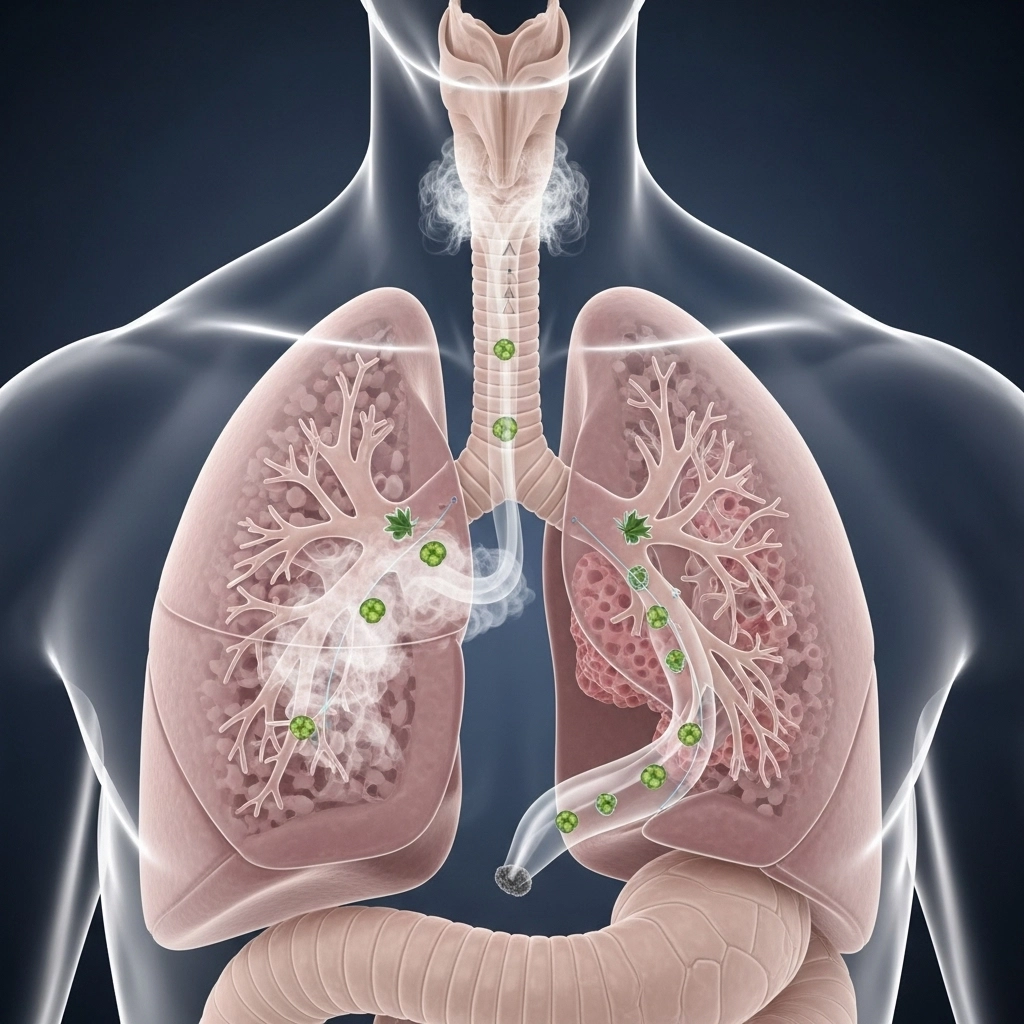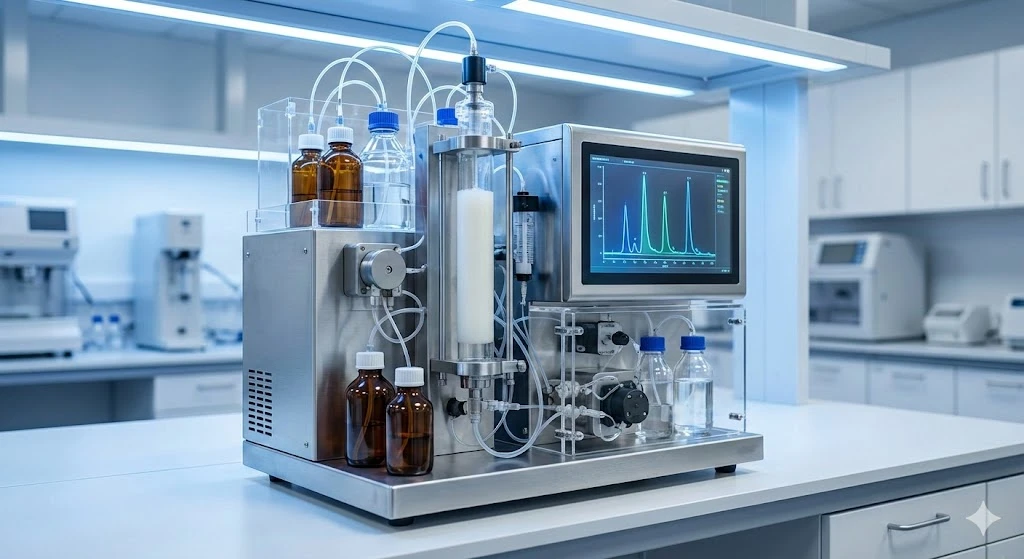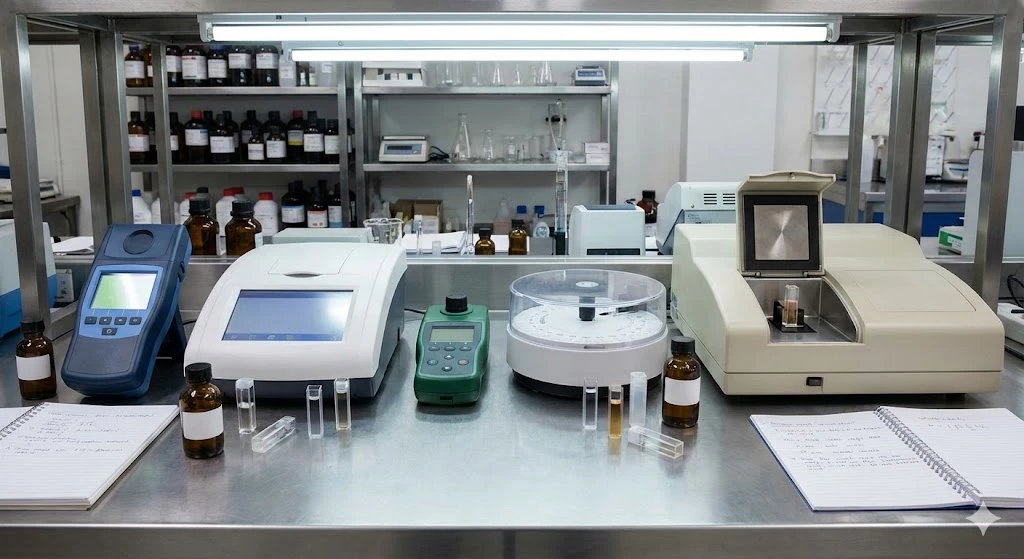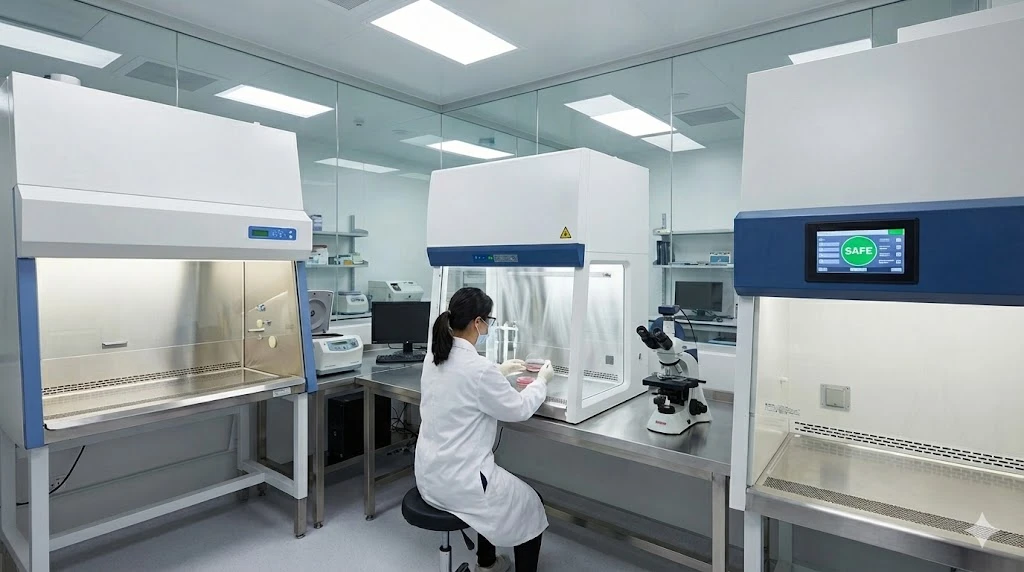Optimizing Cannabis Therapy: Understanding Bioavailability and Administration Routes

ImageFX (2025)
Navigating the world of cannabis-based therapeutics can feel complex, especially when aiming for precise and effective results. Beyond simply choosing the right strain or understanding cannabinoid concentrations, two critical factors profoundly influence how your body responds: bioavailability and the chosen route of administration. These terms might sound technical, but grasping them is key to unlocking the full therapeutic potential of cannabis. This guide will demystify these concepts, helping you make informed decisions for your wellness journey.
Understanding Cannabis Bioavailability & Administration Routes
To truly optimize cannabis for therapeutic use, it's essential to define the core concepts that govern its journey through your body:
Bioavailability: Simply put, bioavailability refers to the rate and extent to which a therapeutic compound is absorbed into your bloodstream and becomes available at its target site. Think of it as how much of the active ingredient actually gets to where it needs to go, and how quickly.
Route of Administration: This is the specific pathway a therapeutic compound takes to enter your body systems. Common routes for cannabis include inhalation, oral ingestion, and topical application.
Vehicle: The "vehicle" is the delivery mechanism that carries the cannabis compounds into your body. This could be the air you inhale, the oil in an edible, or the cream in a topical product. The vehicle significantly influences both the bioavailability and the route of administration.
For context, intravenous (IV) drug administration is considered the gold standard, boasting 100% bioavailability. All other methods are measured against this benchmark to determine their relative effectiveness. Understanding these dynamics is paramount for consistent and predictable therapeutic outcomes.
Common Cannabis Delivery Methods & Their Impact
Different methods of consuming cannabis lead to vastly different experiences due to variations in how cannabinoids are absorbed and processed by the body.
Inhalation: Rapid Onset, High Bioavailability
Methods like smoking, vaping, and vaporization offer a highly effective route for cannabis compounds to enter the body. This efficiency is primarily due to:
Vast Surface Area: The lungs possess an enormous surface area, providing ample opportunity for rapid absorption of cannabinoids.
Proximal Bloodstream Access: The lungs are directly connected to the bloodstream, allowing cannabinoids to quickly enter systemic circulation.
While traditional smoking is effective, it carries risks associated with combustion byproducts. Vaping and vaporization have emerged as popular alternatives, heating cannabis to release cannabinoids without burning the plant material. These methods are particularly effective for volatile preparations, offering consistent and relatively fast-acting dosing. However, ongoing research continues to explore potential long-term health implications of these newer delivery systems.
Oral Administration: Variable Absorption, Delayed Effects
The oral route, encompassing cannabis capsules, edibles, and tinctures ingested directly, is a widely used method. However, its bioavailability can be quite variable and often lower compared to inhalation. The primary reason for this variability is first-pass metabolism:
Enzymatic Breakdown: When cannabis compounds are ingested, they first pass through the digestive system and liver. Enzymes in these organs actively break down cannabinoids before they can reach the bloodstream and exert their therapeutic effects. This process significantly reduces the amount of active compound available to the body.
The vehicle plays a crucial role here. Certain substances can enhance the absorption of cannabis compounds. For instance, the presence of medium and long-chain fatty acids can significantly boost the bioavailability of compounds like cannabidiol (CBD) by facilitating their absorption and movement into the bloodstream. This is why many cannabis edibles and oils are formulated with fats.
Here's a quick comparison of inhaled vs. oral administration:
Feature | Inhalation (Smoking/Vaping) | Oral (Edibles/Capsules) |
|---|---|---|
Bioavailability | High (typically 30-70%) | Variable, often Low (typically 6-20%) |
Onset of Effects | Rapid (minutes) | Delayed (30 minutes to 2 hours or more) |
Duration of Effects | Shorter (2-4 hours) | Longer (4-8 hours or more) |
Dosing Control | Easier to titrate (adjust dose) | More challenging due to variability and delayed onset |
Primary Effect | Systemic, fast-acting | Systemic, prolonged |
Topical Administration: Localized Relief, Minimal Systemic Absorption
Topical administration, involving cannabis-infused oils, balms, and salves applied directly to the skin, is a popular choice for localized relief. The bioavailability of cannabinoids via this route is typically very low, meaning these compounds generally do not reach the bloodstream.
Instead, topical cannabinoids interact with CB2 receptors located in the skin and surrounding tissues, influencing the endocannabinoid system locally. This makes topical products ideal for addressing:
Localized pain
Muscle soreness
Skin conditions
Inflammation in specific areas
If systemic effects (e.g., for anxiety or sleep) are desired, topical application is generally not the most effective method.
Optimizing Cannabis Absorption: Key Considerations
Despite the growing interest in cannabis therapeutics, in-depth knowledge regarding cannabinoid bioavailability in humans has historically been limited due to regulatory hurdles hindering rigorous research. However, emerging insights highlight several key considerations for optimizing absorption:
Dietary Lipids: It is widely recognized that a healthy intake of dietary lipids (fats) can significantly enhance the uptake of certain cannabinoids, particularly CBD. This underscores the importance of consuming cannabis products, especially orally, with or after a meal containing healthy fats.
Targeted Therapeutic Effects: The chosen route of entry should align with the desired therapeutic outcome.
Systemic Effects: For conditions requiring widespread interaction with cannabinoid receptors throughout the body (e.g., CB1 and CB2 receptors in the nervous system for anxiety, PTSD, or MS symptoms), a route that ensures systemic presence in the blood (like inhalation or carefully dosed oral products) is necessary.
Localized Effects: For issues confined to a specific area, such as muscle pain or skin inflammation, topical applications are often more appropriate, leveraging localized receptor interactions without systemic absorption.
The therapeutic profiles of individual cannabinoids, including THC, CBD, Cannabinol (CBN), and others, are diverse and complex. Understanding their unique interactions with the body's systems is a fascinating area of ongoing research.
Final Thoughts on Cannabis Therapy
The route of administration and the bioavailability of cannabis compounds are not merely technical details; they are vitally important parameters that directly influence the effectiveness of cannabis-based therapies. By understanding how different methods impact absorption and onset, you can make more informed choices to achieve your desired therapeutic effects and ensure proper, consistent dosing.
Ready to explore high-quality cannabis products and equipment that support precise dosing and effective administration? Explore our full selection on LabX today!
Frequently Asked Questions (FAQ)
What is the difference between bioavailability and route of administration? Bioavailability measures how much of a compound reaches your bloodstream and is available to produce an effect, while the route of administration is the method by which the compound enters your body (e.g., oral, inhaled, topical).
Why is oral cannabis administration less bioavailable than inhalation? Oral administration often has lower bioavailability due to "first-pass metabolism," where enzymes in the digestive system and liver break down cannabinoids before they can fully enter the bloodstream.
Can I increase the bioavailability of oral cannabis products? Yes, consuming oral cannabis products with dietary fats (like those found in a meal) can help enhance the absorption and bioavailability of cannabinoids like CBD.
When should I choose topical cannabis over other methods? Topical cannabis is best for localized relief of pain, inflammation, or skin conditions, as cannabinoids applied topically primarily interact with receptors in the skin and do not typically enter the bloodstream for systemic effects.










